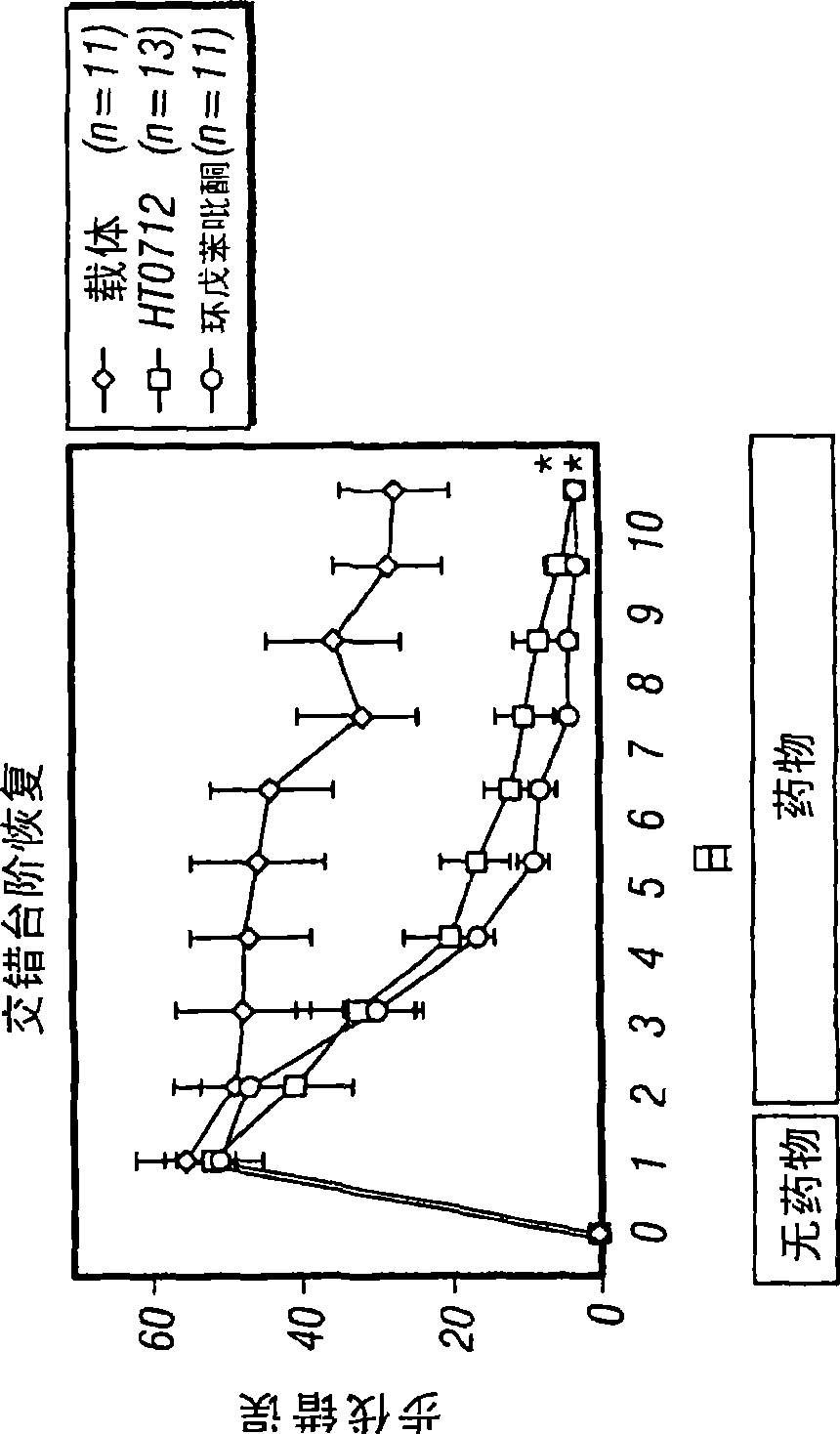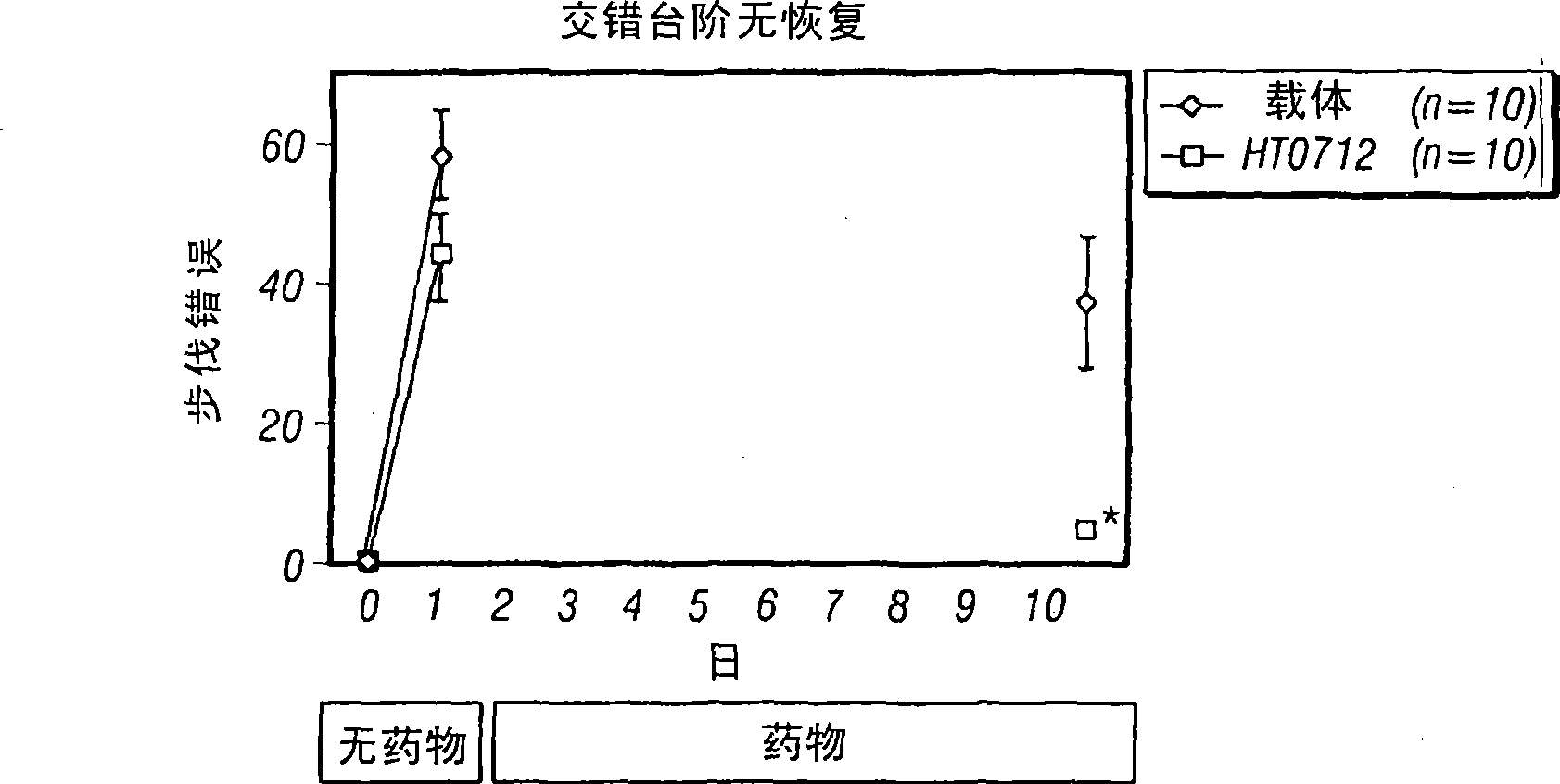Phosphodiesterase 4 inhibitors for cognitive and motor rehabilitation
A technology of phosphodiesterase and inhibitors, which can be used in medical preparations containing active ingredients, pharmaceutical formulas, nervous system diseases, etc., and can solve problems such as nerve cell death function and abnormalities
- Summary
- Abstract
- Description
- Claims
- Application Information
AI Technical Summary
Problems solved by technology
Method used
Image
Examples
Embodiment
[0106] The subjects were 103 adult male SD (Sprague-Dawley) rats (Taconic, Gremantown, NY), weighing 275-300 g at the beginning of the experiment. Rats were placed individually in a temperature-controlled animal facility with a light-dark cycle of 12:12 hours, and the animals had free access to food and water. All animal testing protocols are consistent with NIH guidelines, and the animal testing protocol is approved by the Animal Care and Use Committee of Cold Spring Harbor Laboratory
[0107] Motor recovery on a staggered step task
[0108] The staggered step task employed in this study was performed according to the method described by Klint et al. in Journal of Neurotrauma, 21st Annual National Neurotrauma Society Symposium, 20(10):(2003). The staggered step mission consists of an 8' long and 3.5' wide runway connected by a series of 28 elevated steps. The steps are alternately deviated from the center line by 5cm, with a distance of 25cm between every two steps. This a...
PUM
 Login to View More
Login to View More Abstract
Description
Claims
Application Information
 Login to View More
Login to View More - R&D
- Intellectual Property
- Life Sciences
- Materials
- Tech Scout
- Unparalleled Data Quality
- Higher Quality Content
- 60% Fewer Hallucinations
Browse by: Latest US Patents, China's latest patents, Technical Efficacy Thesaurus, Application Domain, Technology Topic, Popular Technical Reports.
© 2025 PatSnap. All rights reserved.Legal|Privacy policy|Modern Slavery Act Transparency Statement|Sitemap|About US| Contact US: help@patsnap.com



